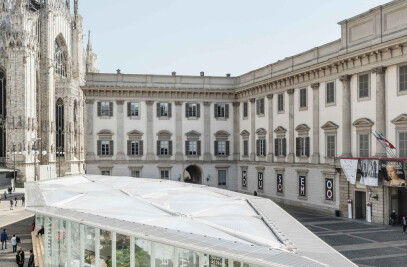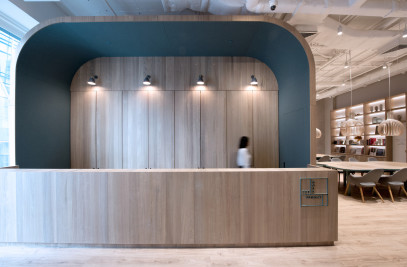A Botanical and Artistic approach by Patrick Blanc Do plants really need soil? No, they don't.....The soil is merely nothing more than a mechanic support. Only water and the many minerals dissolved in it are essential to plants, together with light and carbon dioxide to conduct photosynthesis. Plants in the wild are growing on vertical surfaces Wherever water is available all year long, as in tropical forests or in temperate mountain forests, plants can grow on rocks, tree trunks and soil-less slopes. In Malaysia, for instance, out of the 8,000 known species, about 2,500 are growing without any soil. Even in temperate parts of the world, many plants are growing on cliffs, cave entrances, or fallen rocks. On such very steep places grow many Berberis, Spirea and Cotoneaster species. Their naturally curved branches indicate that they originate from naturally steep biotopes and not from flat areas like the gardens where man usually grows them.... Thus, as seen from nature, it is possible for plants to grow on nearly soil-less vertical surfaces as long as there is no permanent water shortage. Walls and plants, a surprising, though long-lasting combination Whenever roots are allowed to grow deep inside a wall, they can easily damage the wall and cause its destruction. That is precisely what happened to the Angkor temples. This root-related damage can be prevented if water is regularly given to plants. Roots are then only spreading on the surface, leaving the inner wall unaffected. From these observations, and aiming at setting up permanent plant cover on walls with a minimum of maintenance, Patrick Blanc conceived the Vertical Garden . The core innovation is to use the root ability to grow not only on a volume (of soil, of water, of sand, .....) but also on a surface. Without any soil, the plant-supporting system is very light and thus can be implemented on any wall, whatever its size. The Vertical Garden can also be set up indoor. Artificial lighting is then usually required. It's even possible to set it up in fully closed places without any natural light such as underground parking lots. The plant species selection is set according to the prevailing climatic conditions. The Vertical Garden is composed of three parts: a metal frame, a PVC layer and a layer of felt. The metal frame is hung on a wall or can be self-standing. It provides an air layer acting as a very efficient thermic and phonic isolation system. A 1 cm .-thick PVC sheet is riveted to the metal frame. This layer brings rigidity to the whole structure and makes it waterproof. A felt layer, made of polyamide, is stapled on the PVC. This felt is rotproof and its high capillarity allow an homogeneous water distribution. The roots grow on this felt. Plants are installed on this felt layer as seeds, cuttings or already grown plants. The density is about thirty plants per square meter. The watering is provided from the top. Tap water must be supplemented with nutrients. Watering and fertilisation are automated. The whole weight of the Vertical Garden , including plants and metal frame, is lower than 30 kg per square meter. Thus, the Vertical Garden can be implemented on any wall, without any size or height limitation. The Vertical Garden on concrete walls: a shelter for biodiversity and a cleaning system for cities. The Vertical Garden allows man to re-create a living system very similar to natural environments. Its a way to add nature to places where man once removed it. Thanks to botanical knowledge, it's possible to display natural-looking plant landscapes even though they are man-made. In any city, all over the world, a naked wall can be turned into a Vertical Garden and thus be a valuable shelter for biodiversity. It’s also a way to add nature to the daily life of city inhabitants. Besides, thanks to its thermic isolation effect, the Vertical Garden is very efficient and aids in lowering energy consumption, both in winter (by protecting the building from the cold) and in summer (by providing a natural cooling system). The Vertical Garden is also an efficient way to clean up the air. In addition to leaves and their well-known air-improving effect, the roots and all the micro-organisms related to them are acting as a wide air-cleaning surface with the highest weight to size efficiency. On the felt, polluting particles are taken in from the air and are slowly decomposed and mineralised before ending up as plant fertiliser. The Vertical Garden is thus an efficient tool for air and water remediation wherever flat surfaces are already extensively used by human activities

































